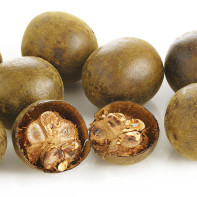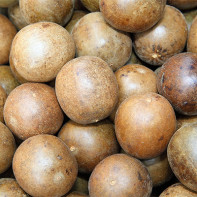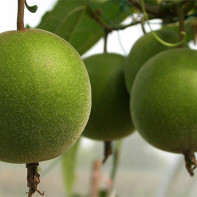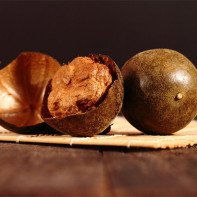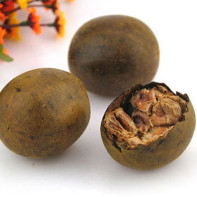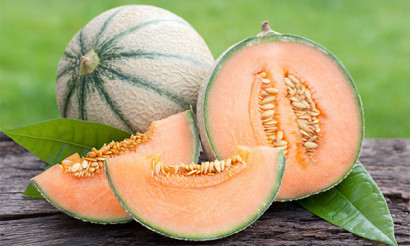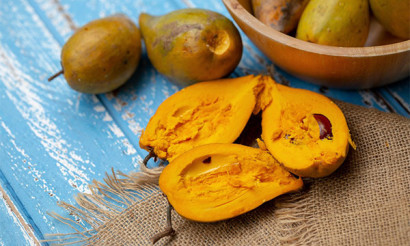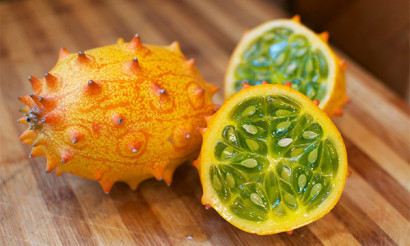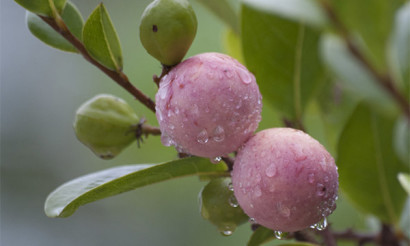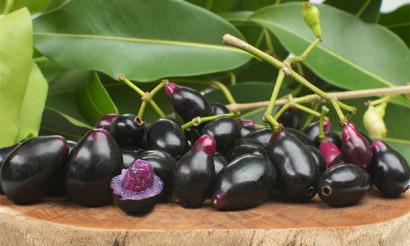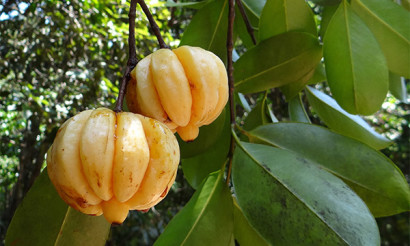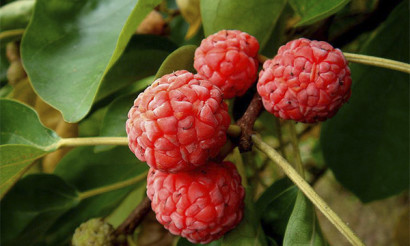Arhat: what kind of fruit is it and how is it healthy
In Thailand and China, many unique plants grow. Among them, Arhat stands out for its unusual properties. Few people have heard of him outside these countries. The reason is in the characteristics of the fruits and a very narrow region of growth. In other countries, this lianiform perennial representative of pumpkin just does not take root.
Buddhist Monk Fruit
Having common features with Russian cucumbers and pumpkin, the arhat is not content with horizontal surfaces, but tries to climb higher, relying on tree trunks. The length of the shoots allows you to rise high, because the lashes grow to 5 m. Under the generous tropical sun, small, round fruits with a fleshy center ripen. It is hidden under a thin but stiff skin with pubescence over the entire surface. When dried, the pulp loses much in volume, but becomes 200 times sweeter than sugar. It is a pity, but this feature was not used in industrial production. During processing, the inside of the arhat acquires a sharp smell of rot. It is not yet possible to completely remove it from the finished product. The second obstacle was the limited number of plantations, since the plant does not acclimatize to other latitudes and soil composition, growing only in southern China and northern Thailand.
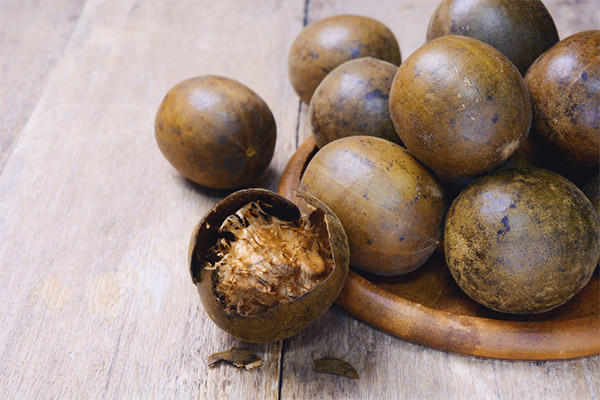
The first description of the appearance of the plant and its unique properties was made in the 13th century by Buddhist monks who grow it in the monastery gardens in the Guangxi region. The second name, Lo Han Guo, translates as the fruit of the Buddha, and the arhat received it for good reason. It is used in folk medicine of these countries as a valuable product that prolongs active longevity and stops the aging process due to the powerful cleansing of the body and the restoration of the circulation of internal energies.
Fresh it is almost not eaten. Having reached ripeness, it very quickly begins to deteriorate, and the juice - to ferment. Extracts, dried fruits, whole or in crushed form, are on sale. They are used as a seasoning, an additive to tea or as a medicine.
Composition and calorie content
Juicy sweet pulp is located closer to the walls. In the center, like a zucchini or pumpkin, numerous seeds are concentrated. All parts of the fetus have found application in cooking and traditional medicine. The plant is not included in the official register of the State Pharmacopoeia of the Russian Federation, which does not interfere with the use of extracts and dried fruits as a powerful means of rejuvenation, to stabilize cancer patients and treat dry obsessive cough. As a natural sweetener, arhat is recommended for diabetes and as part of weight correction programs. Such a wide range of applications is possible due to a very interesting composition. Components:
- vitamins A, C, E, K, PP, group B almost in full;
- niacin;
- tomes;
- zinc;
- calcium;
- copper;
- iron;
- manganese;
- potassium;
- magnesium;
- saponins;
- carotenes;
- cellulose;
- mono- and disaccharides.
With great sweetness, the calorie content is almost not serious, 2.3 kcal per 100 g of fresh product.
Useful properties of arhat
The effect of the fruit on the body has not yet been fully studied due to its low prevalence. It is known that fruits can alleviate a febrile state, increase immunity and tone the body, remove toxins and toxins. Arhat stops the development of oncological diseases associated with the respiratory system and ENT organs. The fruit is useful for those who speak loudly and speak a lot.Fresh and dried pulp restores the voice, reduces perspiration, accelerates regeneration in case of damage to the vocal cords.
The fruits of the plant have anti-inflammatory and antipyretic properties, stimulate the rapid removal of excess fluid from the body, soften fecal stones and gently cleanse the intestines, normalizing digestion and water-salt balance.
In traditional medicine recipes, arhat is used to soften and stop a dry barking cough, remove sputum, ease breathing, relieve low-grade fever, stop inflammatory processes and reduce the recovery period after injuries and serious illnesses. Tea with pieces of Buddha fruit perfectly quenches thirst and gives energy to continue working on a hot day, preventing the body from overheating and getting heat stroke.
Secrets of the procurement of raw materials
The arhat is very capricious, it is not stored in a ripe state, it can go bad within one day. It also cannot dry under natural conditions, acquiring the repulsive smell of rot and fermentation. To preserve a unique product, the fruits are removed immature and dried in ovens over low heat.
Procter & Gamble, who patented their method in 1995, managed to remove most of the odors. The fruits that have undergone special processing and drying are peeled of seeds and peel, and the flesh is dried and sold only in this form.
Contraindications
Fruits have a dual effect, which is necessarily taken into account when introducing a product into the diet. It must be remembered that the accelerated exchange of nucleic acids causes a violation of the outflow of urine, which is unacceptable for people suffering from chronic edema. You should not start acquaintance with the arhat during exacerbation of gout and urolithiasis. The effect of the pulp of the fetus on the female body during pregnancy and breastfeeding has not been studied.
Interesting: Buddha fruit has a very low allergenicity rate. There are only a few cases of manifestations of individual intolerance to the product.
If you are offered to buy fresh fruit, then in the name of preserving your health you will have to refuse, because in its ripe form, its shelf life is from 24 hours to 5-6 days in the refrigerator, and at the slightest sign of spoilage there is a strong unpleasant odor.
How to eat arhat properly

You can try a real ripe fruit only on the plantation where it is grown. In other cases, you will have to be content with a dried version or extract. If you are lucky to be in Thailand at a tasting of the Buddha's fruit, then it is worth considering that arhats are eaten like a pumpkin, raw, removing the skin and seeds. It is exported in dried and dried form. It is added as a sweetener in drinks, sports nutrition dishes, and alcohol.
What can be prepared from arhat: recipes
The scope of cooking in the arhat is limited. It is used only in small portions, since it is much sweeter than the usual sugar. In folk medicine, most often fruit is used to alleviate the condition with a strong tearful cough.
Tea
To prepare a drink, the dried fruit is ground and boiled over low heat for about half an hour.
Milk drink
1 arhat is poured with a liter of boiling water, several holes are pierced in the peel and left to infuse under warming for 60 minutes. The level of sweets is adjusted by adding milk to the infusion.
Cough medicine
Powdered pulp of dried fruit is brewed with boiling water and insisted for 2-3 hours, adjusting strength and sweetness to taste. The same recipe is useful for restoring strength after great physical exertion and strength training.
Interesting facts about arhat
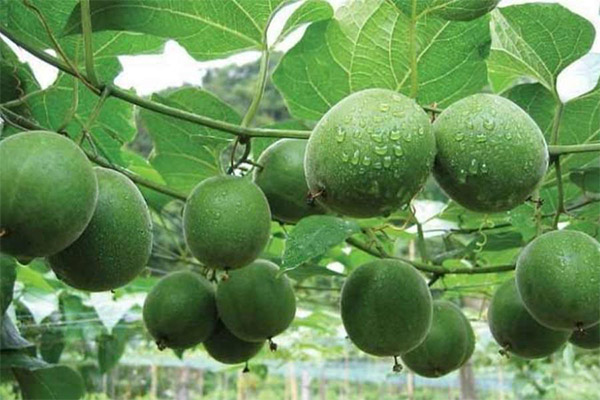
- The plant belongs to the pumpkin family, the crop is plentiful, but the size of the fruit does not exceed 5–7 cm.
- Its distribution area is limited to 2 countries.
- The ripe fruit is perishable and becomes unusable within 24 hours.
- Fresh and dried pulp is used in recipes of traditional medicine as a product that prolongs the life and inhibits the aging process.
- Arhat pulp is 200 times sweeter than sugar.
- Funds based on Buddha fruit are used to relieve nicotine, alcohol and drug addiction and block withdrawal symptoms.
- Fruits are zero-calorie foods.
The amazing fruit of the Buddha holds many secrets that researchers have yet to unravel, but in practice it is most often used as a natural sweetener and a means of strengthening immunity and prolonging youth.
«Important: all information on the site is provided exclusively in fact-finding purposes. Before applying any recommendations, consult with a profile specialist. Neither the editors nor the authors are liable for any possible harm caused materials. "

